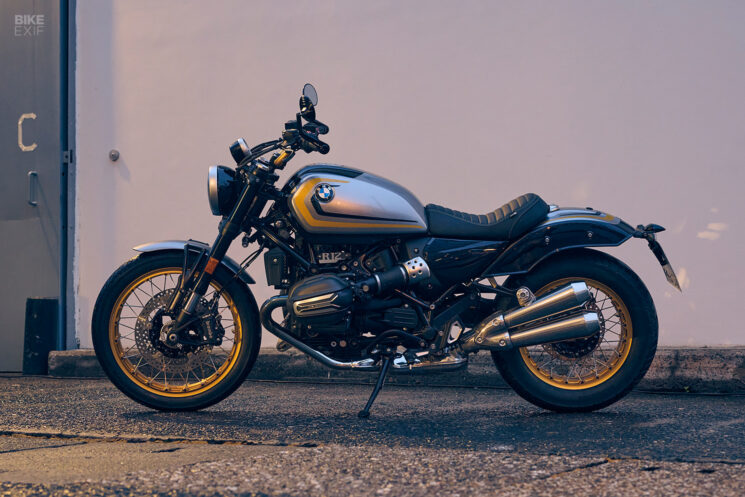
Six months ago, BMW Motorrad gave us a taste of the first major overhaul to the immensely popular R nineT—the renamed BMW R 12 nineT. Since then, murmurs have persisted that the R 12 nineT won’t be the only new bike released on the updated heritage boxer platform. The Bavarian powerhouse has just confirmed this, with the unveiling of the new BMW R 12 cruiser [above].
Yes, cruiser. Despite the legacy of the oft-maligned BMW R1200C and the lackluster reception that the R18 has received, BMW is insistent that what the people want is a boxer-powered cruiser. That said, the R 12 might be their sharpest stab at the genre yet… provided that you’re happy to play fast and loose with the definition of ‘cruiser.’
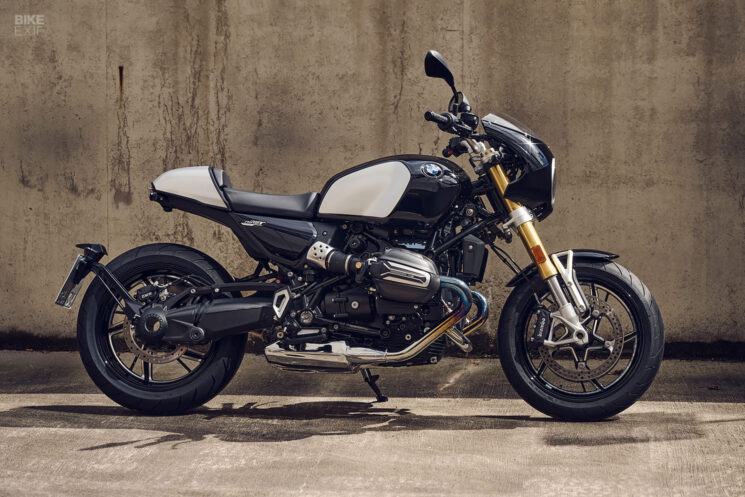
As has been the custom with BMW’s heritage bikes (and competing bikes like the Harley-Davidson Evo Sportster and Triumph Bonneville), both R 12 variants are essentially the same bike, dressed two ways. The way we’re reading it, the R 12 nineT roadster [above] is the flagship of the range, while the R 12 cruiser comes in as a stripped-down, easier-going, and presumable cheaper sibling.
If you missed our previous coverage of the new R 12 nineT, we’ll bring you up to speed. The new R 12 platform uses pretty much the same 1,170 cc air- and oil-cooled boxer powerplant as the outgoing R nineT, capable of 105 hp at 7,000 rpm and 115 Nm of torque at 6,500 rpm. But it’s been repackaged in a new chassis, with several notable changes beyond just its new valve covers.

The R 12 platform uses a brand-new tubular steel main frame with a bolt-on subframe. BMW’s proprietary Paralever shaft drive-slash-swingarm still does duty out back, but the single shock it attaches to has been placed at a far more diagonal angle. This not only looks neater, but it presumably also allows BMW to fettle chassis geometry to suit different versions of the R 12.
The R 12’s air box has been relocated to under the seat, so the nineT has lost its distinctive ‘snorkel.’ The exhaust is new too, featuring a pair of conical mufflers that almost look too good to swap out.
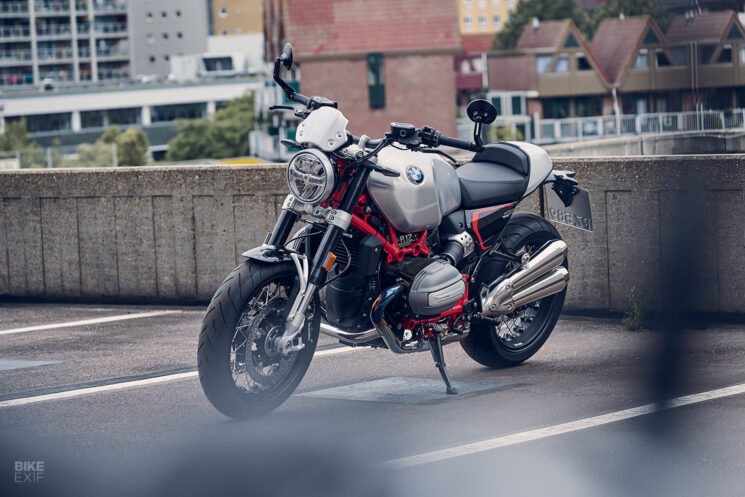
From here, the two models’ spec sheets diverge. The R 12 nineT roadster gets fully adjustable 45 mm upside-down forks and a rear shock that’s adjustable for preload and rebound, with 120 mm of suspension travel at both ends. Together with its 3.50×17” (front) and 5.50×17” (rear) wheels, it has a 1,511 mm wheelbase, a rake of 110.7 mm, a steering head angle of 62.3 degrees, and a seat height of 795 mm.
The R 12 cruiser boasts the same style of suspension as the R 12 nineT, but with fewer adjustment options and with travel reduced to 90 mm. The front wheel is bigger and narrower (2.75×19”), while the rear wheel is smaller and narrower (4.00×16”). The wheelbase is 1,520 mm, the rake is 132.5 mm, the steering head angle is 60.7 degrees, and the seat height is 754 mm.
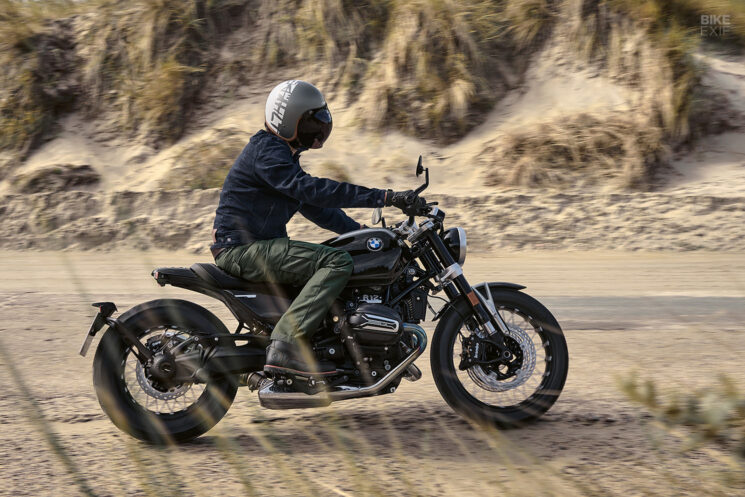
Both bikes wear alloy wheels in standard trim (spoked hoops are optional), with twin radially-mounted four-piston brake calipers gripping 310 mm discs up front, braided steel brake lines, and cornering ABS as standard. The R 12 weighs 227 kilos [500 lbs] wet, while the R 12 nineT tips the scales at 220 kilos [485 lbs].
It’s also worth noting that the R 12’s engine is down-tuned from the flagship model’s. It’s been cut down to 95 hp at 6,500 rpm and 110 Nm at 6,000 rpm, presumably to fit in with the ‘easygoing’ ethos that it’s gunning for.
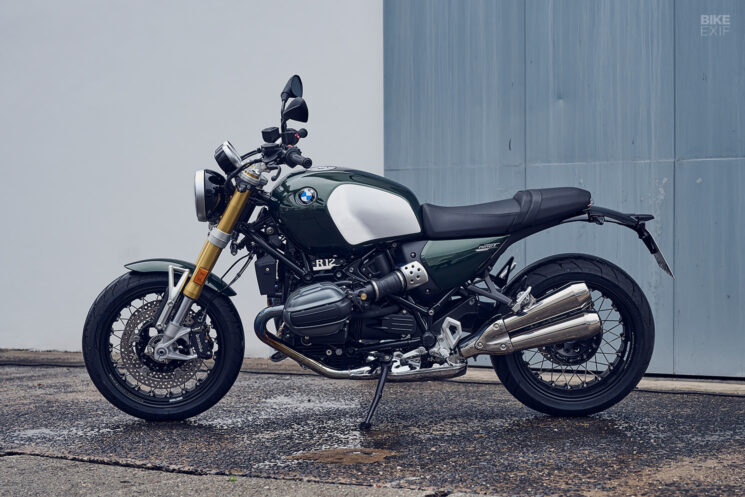
The two bikes also feature different bodywork. On the R 12 nineT, the redesigned tank, seat, and tail hump cut a much more classic silhouette than the nineT used to, with a near-perfect fly line running through the bike. The redesign also puts the handlebars closer to the rider—a mod that the previous model sorely needed.
Moving the R 12, you get a more compact, tapered fuel tank, inspired by the toaster tanks on classic /5 boxers. The bikes share the same triangular side covers, but the R 12’s seating arrangement is very different. BMW’s material shows the R12 in various guises, including a version with a bobbed seat and the tiniest rear cowl, and a version that proudly wears a generous cruiser-like rear fender.

We’re not clear on which is the default setting, but we’re pretty sure it’s the latter. Combined with the R 12’s high handlebars and chunky stepped seat, the bike has a pseudo-vintage Sportster vibe that we’re completely ambivalent about.
On the one hand, it’s a heck of a lot prettier than the late-90s design of the R1200C. On the other, the R 12’s relatively high (for a cruiser) stature, distinctively modern swingarm, and sporty foot peg positioning are at odds with its cruiser dress. Besides, we’re not sure anyone even asked for a cruiser version of the R nineT.
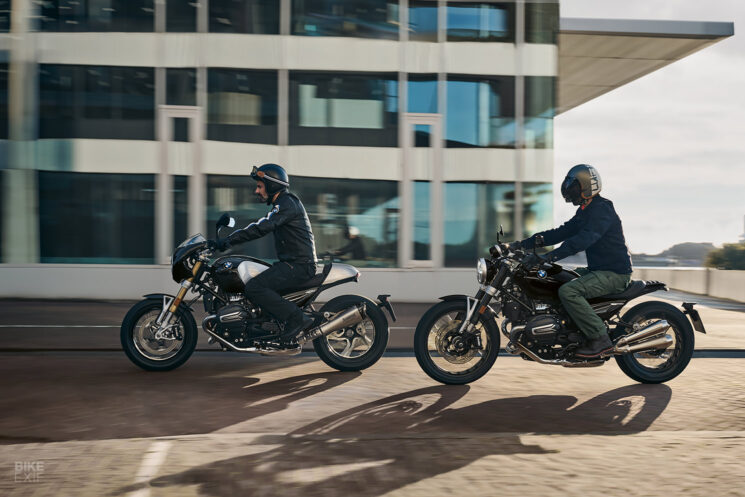
Time will tell how the market reacts to the R 12. Meanwhile, the way that BMW has dressed these two bikes speaks volumes about how malleable the new platform is. The real story here is that BMW was able to put two different fuel tanks on two versions of the same bike—something that wasn’t previously possible with the R nineT.
The outgoing R nineT Roadster, Scrambler, and Urban G/S were all stuck with identical bodywork. It limited not only how much BMW could restyle each bike, but also how much work customizers had to do if they wanted to build truly unique custom R nineTs. By building a simpler frame, and retaining the nineT’s bolt-on-and-off subframe design, BMW has left the door wide open for customization.
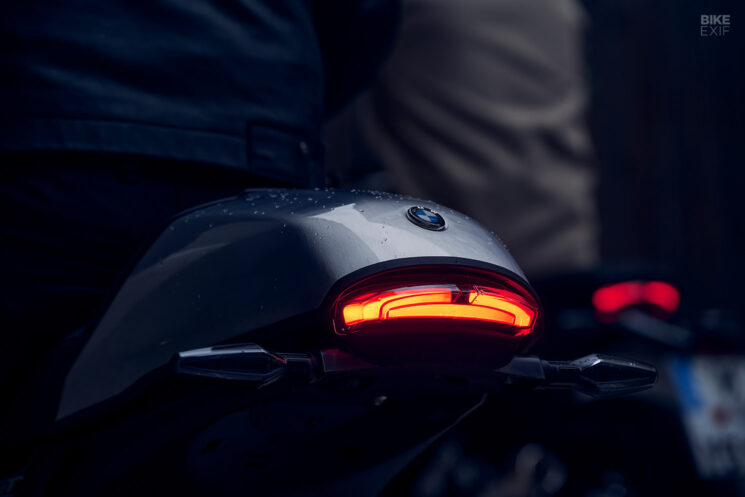
The same sentiment might not hold for the R 12’s updated electronics. The LED lighting suite on both versions is nice, but lovers of modern classic motorcycles might balk at the built-in traction control, dynamic torque control, and myriad riding modes. The R 12 nineT gets four riding modes out of the box, while the R 12 borrows the R 18’s dismally-named ‘Rock’ and ‘Roll’ riding modes.
BMW does say that the R 12’s LIN-Bus system makes the electronic system modular, and therefore easy to customize. But we’re not entirely sure how much freedom that offers you, and how much of it you can swap out before things stop turning on.
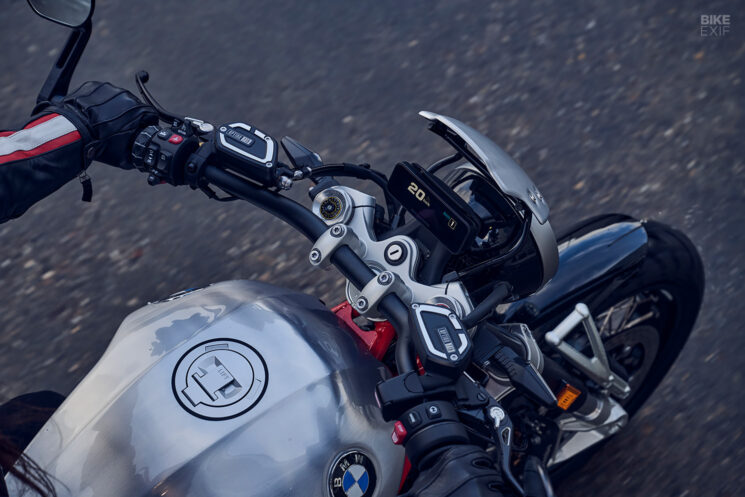
But if you like modern tech on your bike, the good news is that BMW has thrown some spicy optional extras into the mix. If the analog dials (just a speedo on the R12; a speedo and tach on the R 12 nineT) are too retro, there’s a slim (and very stylish) TFT display available ex-works. USB-C and 12 V charging sockets are included, as is a keyless ignition and Bluetooth connectivity.
Other optional extras include a quick-shifter, hill start control, and heated grips. BMW also has an extensive range of bolt-on bits, including their top-shelf CNC-machined Option 719 parts.
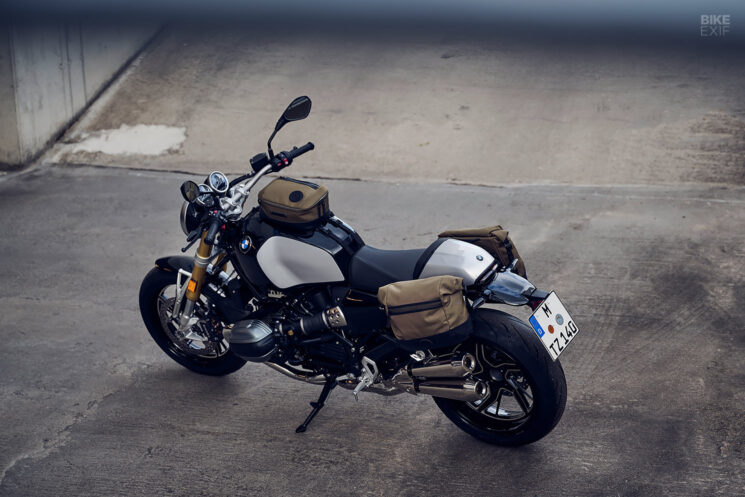
There’s no word on exactly when the R 12 nineT roadster and R 12 cruiser will leave the factory, nor what they will cost. We do know that each will come in a ‘base’ colorway, with two extra liveries available for an additional fee.
Whether or not you’re on board with BMW’s latest attempt at building a cruiser, the real question here is how many more R 12 variations we’ll see. An R 12 Scrambler feels like a no-brainer, and we can’t help but feel that the bike’s streamlined frame has great potential for a truly low-slung bobber.
Only time will tell.
Source: BMW Motorrad
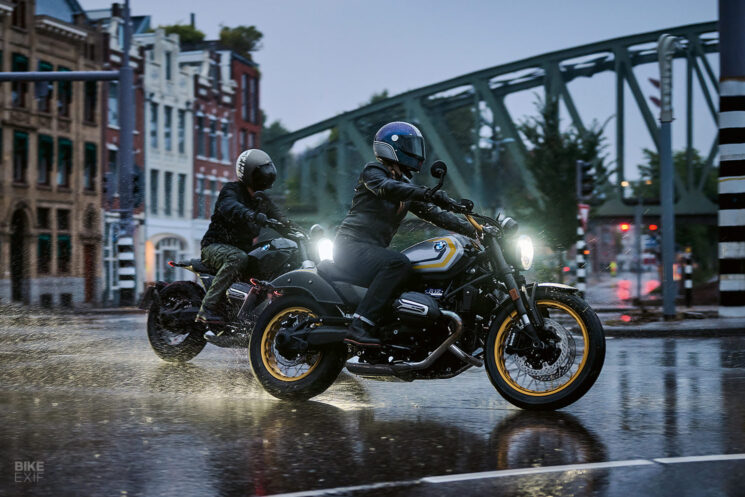
from Bike EXIF https://ift.tt/ouq1Yp4
No comments:
Post a Comment